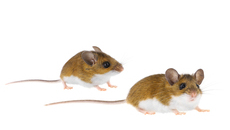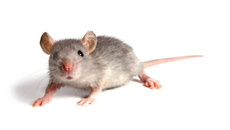The common house mouse, an Old World rodent with origins in Asia, most likely traveled to the US in the cargo hold of boats with New World pioneers. Small, resilient rodents, 4.5 to 6 inches long with light gray to dark brown bodies, the biggest thing on a common house mouse, besides its teeth are its large pointy ears. Equipped with sharp, flat teeth, house mice also sport long dark tails. With only three weeks from mating until birth, a house mouse with an average 18-month lifespan can produce 12 litters of 5 to 6 young.
Most prevalent rodent on planet
House mice rank as the most prevalent rodent species on record, along with their cousins, deer mice and white-footed mice. Despite their names, house mice usually don’t live in your home, but dwell in a nest nearby, until the weather turns cold. Because house mice do not hibernate, they seek warm shelter in the winter months with food and water sources. Able to squeeze through holes no larger than a dime, house mice can easily enter your home, build nests and forage in your kitchen for food and water.
House mice pose health threats to humans
Preferring dry attics and space inside of walls, common house mice can obtain the water they need to survive from their food sources. Preferring proteins, house mice will settle for almost anything, including dry dog food, oats and grains and even dried ornamental fruit from home décor items. House mice can spread Salmonella in addition to as many as 200 other human pathogens and therefore pose an immediate threat to humans and pets in homes.


